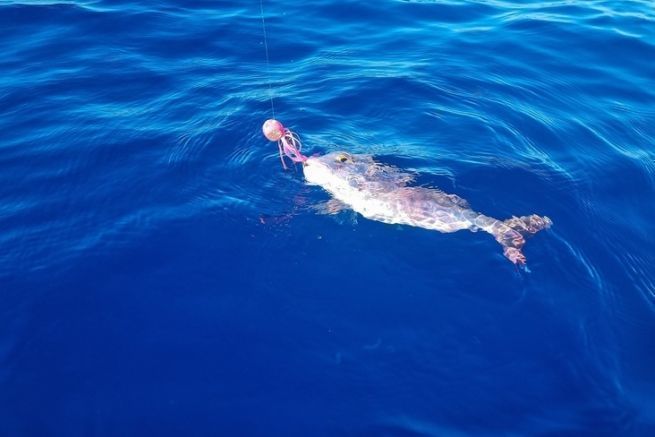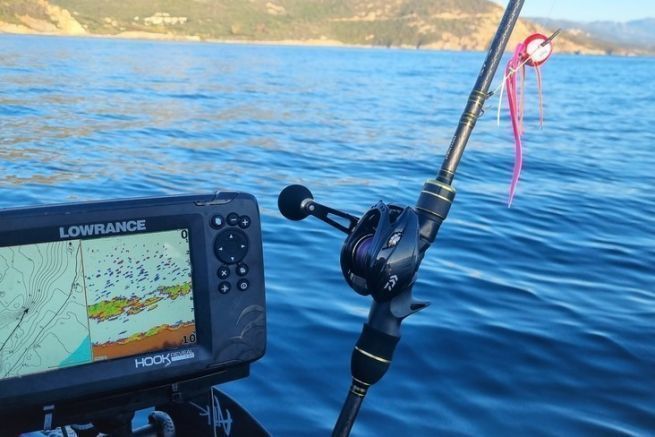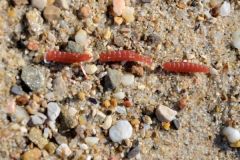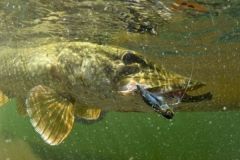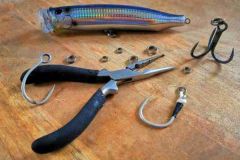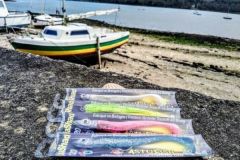Presentation of the bayrubber
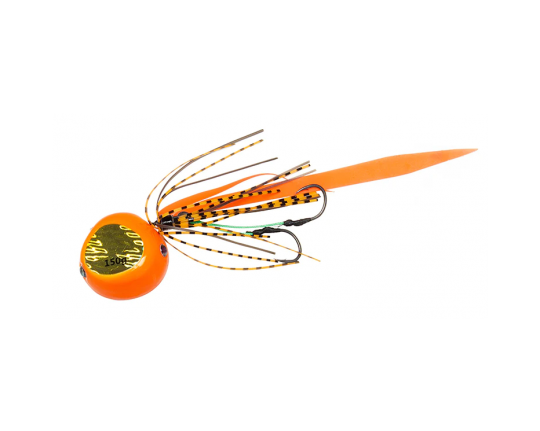
The bayrubber is generally in three sections. The first is the head, often colored and very heavy, it allows to make the rig go down to the bottom quickly. It sometimes has a hole on either side to allow the line to pass through, which allows it to slide along the line.
The second part is a skirt with long colored and sometimes phosphorescent silicone strips. This skirt gives a natural and attractive aspect to the lure which makes it look like a small squid.
The third and last part is obviously what allows us to catch fish, the hooks. There are usually two of them, with different sizes depending on the brand and model. These hooks are connected by assist line, very resistant to traction and abrasion to limit breakage during the fight.
Effective baits
To enhance a bayrubber and add olfactory and gustatory appeal, different types of baits are used. These are to be put on the hooks, allowing to target the attack of the fish and to increase the concretized touches.
The simplest bait to use is simply fish. Strips of 5 to 10 cm are cut and put on the hooks to give the visual aspect of a wounded fish. You can use different species of fresh fish, depending on what you manage to catch in the area on the day.
If you are motivated enough to catch squid beforehand, tube strips or tentacles will give you great results. Squid hold up very well on the hook when fresh and are very popular with various sparids. Shrimp and sardines are baits to be avoided, because their fragility does not allow to equip your bayrubber with them.
Animations and target species
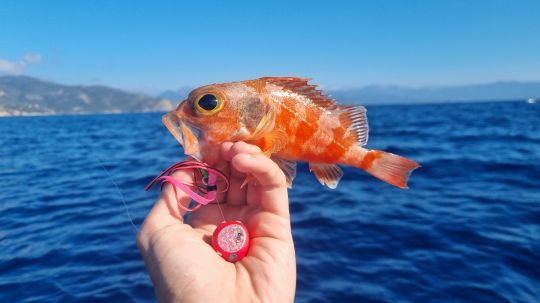
A bait is not intended to be placed on the bottom waiting for a hit, it is important to animate it to give it more appeal.
Sparids such as gilthead bream, pikeperch or dentis are very fond of the descent phases of the bayrubber. The touching generally occurs between 2 and 10 meters above the bottom when the bayrubber dives as would a squid frightened by a predator.
If the fish are difficult to bite on the first run, making a 10-meter run and then returning to the bottom offers a second chance.
Bayrubbers can also be used for deep sea fishing, if the head weight is sufficient, in search of fish such as redfish the kingfisher or even a large pager . The biotope of the bottom changes beyond 100 meters of depth and can therefore offer beautiful touches of species relatively rare for the majority of fishermen.
